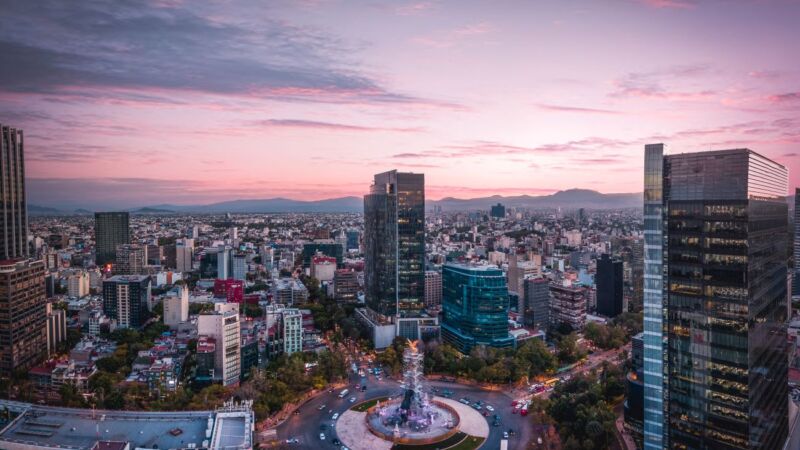To evaluate the most suitable location option for a new project in Latin America, investors nowadays must not only consider the differences in tax and labor laws from country to country, but also the varying ESG requirements and opportunities
Environmental, social & governance (ESG) considerations are becoming more pivotal in investment decisions. Investors worldwide need to be increasingly mindful of the impact their portfolio businesses have on the environment, society, and corporate governance structures. This shift reflects a broader global trend in which sustainability and ethical practices are no longer just optional but rather are seen as essential elements for long-term sustainability and business success.
This is especially important when business seek to expand into other geographic areas or markets. At the early stages of a site selection process, firms have historically evaluated variables such as taxes, costs, labor and community characteristics, utilities, logistics and transportation, and facility-specific requirements, among others, to choose their best option. Nevertheless, the heightened scrutiny from investors, consumers, and regulatory bodies for sustainable and ethical practices makes it crucial now to factor ESG into the equation. In this sense, companies should take into consideration how their operations in a specific location might impact the local environment, biodiversity, or communities and look for ways to mitigate any adverse effects.
The escalating demand for ESG compliance in the United States and Europe is compelling companies around the world to map their supply chains to ensure a responsible business environment. As part of a broader ESG landscape review, companies should do comprehensive mapping of the supply chains for any new site under consideration, tracing the origins of their raw materials, identifying potential risks, and assessing the environmental and social impacts of their operations.
Relevance of ESG in site selection in Latin America
Latin America, with its rich biodiversity, abundance of natural resources, and diverse social groups, presents a unique opportunity for companies looking to set up a project. Latin America’s comparatively lower labor costs make it an attractive destination for manufacturing and service industries seeking cost-efficient operations without compromising quality. Additionally, the region’s increasing infrastructure developments, trade agreements, and strategic geography greatly contribute to a conducive business environment, making the region a promising option for investors.
Further, Latin America has made strides to address ESG concerns, with notable advancements. For example, Colombia, Mexico, and most recently Panama have adopted green taxonomies, while other countries, like Brazil, are expected to follow in the near future. Indeed, Brazil has made ESG reporting mandatory under the International Sustainability Standards Board’s International Financial Reporting Standards 1 and 2 for all publicly traded companies starting in 2026.
Several other countries in the region have also enacted domestic laws that, although not explicitly labeled as ESG, involve environmental, social, or corporate governance aspects. These regulations carry substantial implications that investors need to acknowledge, some of which should be considered in the early stages of choosing the geographical location for a new project.
Differing laws throughout the region
Interestingly, countries in Latin America have different environment-related tax laws that won’t have an equal impact on a company’s financial performance. With the election of Colombian President Gustavo Petro in 2022 and his green agenda, the country underwent a reform that increased taxes on the oil and gas sectors. And Chile’s green tax addresses the reduction of atmospheric pollution and greenhouse gases; while in Mexico, local green gas taxes vary from one state to another, each with different fees and targets.
According to each project’s profile and needs, companies and firms can also benefit more in certain places than others. Brazil’s ongoing efforts to decarbonize the production of steel, aluminum and aviation sectors — thanks to a cleaner energy grid and emerging green hydrogen — present a unique opportunity for procurement of materials with low embodied carbon. While some countries are working to develop carbon markets, Mexico is the only country in the region that has an active regulated market.
Moreover, companies’ carbon footprints and emissions can be reduced if supply chains are brought closer together or located strategically. This information is not only commonly disclosed in ESG reporting but need also required to be reported in Mexico’s and Chile’s Pollutant Release and Transfer Registry (PRTR).
Due to the growing efforts to promote a sustainable business environment, the European Union requires companies intending to supply the European markets to comply with specific regulations, some involving land use change. The EU’s Deforestation Free Regulation, for example, requires companies that sell seven commodities — soy, cattle, palm oil, wood, cocoa, coffee, and rubber, most of which are extensively produced in Latin America — to prove that their production does not come from or result in deforestation or forest degradation.
Regarding social responsibility and community engagement, foreign companies or firms coming into Latin America need to bear in mind the legally binding international treaties and agreements of the region. Latin America is home to numerous indigenous communities, many of which have suffered from marginalization and displacement. For this, the International Labour Organization’s Convention 169 was designed to protect their rights and territories. Further, the Escazu agreement, signed and ratified by many countries in the region, requires not only a certain level of protection of the environment, but also promotes public participation, transparency, and access to justice in environmental matters.
Going beyond traditional procedure to ensure success
Because of the uniqueness of each country’s legal framework and the advancing dynamics of ESG, today’s companies should undertake new and effective methods to map and address as many of the ESG aspects of a new project as possible, says Melissa Owen, a legal expert with an extensive background on ESG matters. Based on her experience and perspective, Owens says that lawyers should conduct a thorough landscape assessment of the legal ESG parameters that apply to the site selected, looking at rules and requirements related to the environment (including biodiversity), social communities, and governance. As part of the analysis, Owen advises lawyers to ideally look at:
-
-
- The national, state, and local or municipal regulations around ESG, such as Mexico’s state-level greenhouse gas emission taxes
- The environmental classification for the area to determine whether it falls within any environmental special zoning
- The proximity to indigenous communities and whether engagement strategies are required
- The title to the land to ensure clear title and ownership
- The projections for carbon emissions, whenever possible, to better understand whether the project would fit within stated corporate targets
- The local regulations on water, land use, waste management, emissions, and biodiversity
-
The lawyer on the site selection team can be an integral link between corporate subject matter experts and the new local regulatory requirements, Owens says, adding that companies having professionals who know the laws on their teams would then be in a better position to determine if the proposed location would advance a company’s sustainability goals as well as its bottom line — or not.
Considerations for the future
Countries in Latin America not only have their own legal structures that pose relevance for investors, but their ESG-related regulations must be taken into account. The region is rich in biodiversity, but also in regulatory diversity — and a comprehensive analysis of the different incentives, benefits, and legal obligations will be key for any planned project to thrive.
Countries across the region are not waiting for the US or Europe to lead the way on ESG. They are taking action on their own and will continue to do so, each with their distinct agenda and goals. Discrepancies between laws and enforcement levels across countries will raise further challenges.
Indeed, the resulting compliance patchwork may not necessarily advance ESG goals, but it is a reality that legal practitioners and businesses in the Americas need to be aware of — and learn how to navigate.







